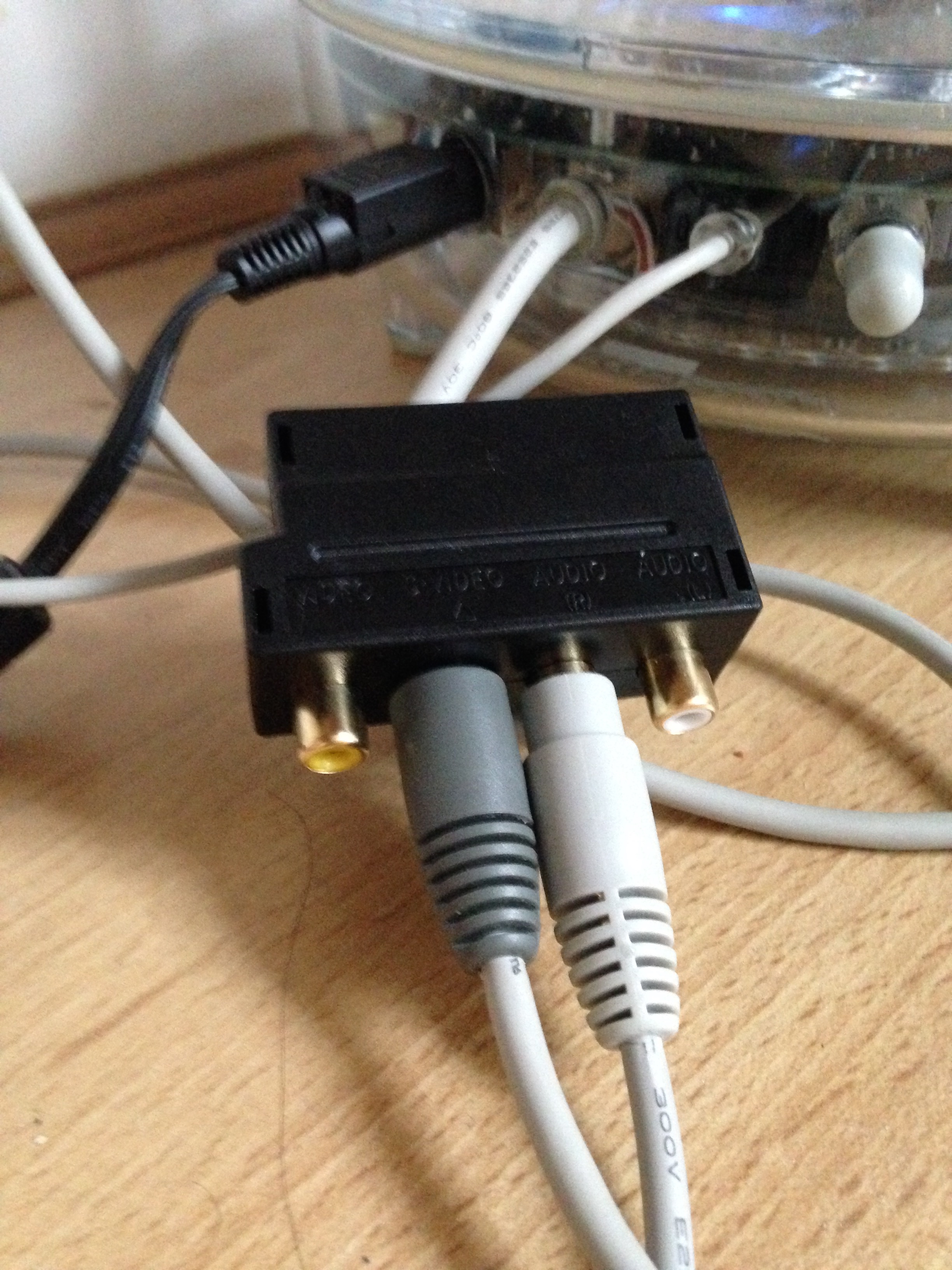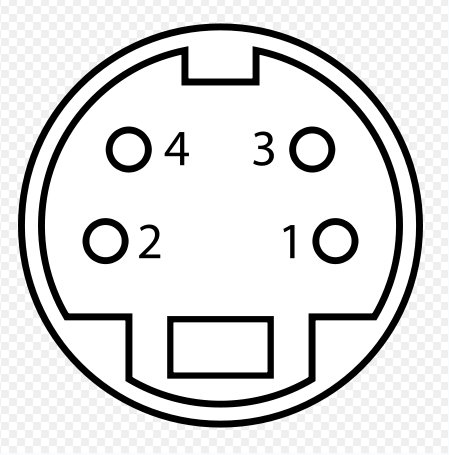11 August 14
I've had the Harman Kardon Soundsticks II for a while now; the sound is decent and they look great.

I've had a couple problems with them though. First the shells of the speakers actually came apart and I had to glue them back together. After removing the old glue and using some superglue to stick them back together, they were ok again apart from a few glue marks.
For a while the connector to the speaker with volume controls on has been a bit temperamental — the connector only worked if positioned at the right angle. As the connector is just an S-Video connector, I set about repairing it myself.
I figured the bad connection was most likely to be in the female adaptor, so I bought a SCART to S-Video/RCA adaptor, hacked out the SCART connector, cut off the old connector from the soundsticks sub and soldered the wires to the adaptor. Here's the finished product:

If you have the same problem, here's the reverse-engineered S-Video pin-out to subwoofer wire colours:

- White
- Shield wire (surrounding the grey wire inside the cable)
- Light grey
- Dark grey
Translucent (shield connector)
For the other speaker, the red wire is the inner and the black wire is the outer on the RCA connector.
This pin mapping took me several attempts to figure out as the resistance between the light grey and ground connectors was very low when testing the old connector, fooling me into thinking it was a common ground. I also didn't think the shield would be connected. Once I figured it out though it worked great. Hope this helps someone else trying to fix these speakers!
If you have SoundSticks III the mapping is slightly different. Head over to Will Thong's blog to see how to do it.
Friday, 18 April 14
-
A new design for the humble axe ★
Great to see innovation on such a deep seated design!
Thursday, 16 January 14
-
Building Nest in a day ★
Really interesting team project to build a functioning learning thermostat in a day. Building connected hardware is rapidly getting easier and cheaper, allowing for much more innovation and encouraging a new wave of entrepreneurship. Companies like Spark are in a great position to ride that wave.
Sunday, 12 January 14
-
Internet Entrepreneurship: How to Avoid Becoming a Stressed Out Loner ★
Great advice. Resonates strongly with my thinking on work and life at the moment.
29 October 13
Microsoft's approach to "Windows Everywhere" has actually led to confusing division in the products they offer — Windows 8 RT on ARM devices, which doesn't run any x86 applications, even though it has a 'normal' Windows Desktop alongside the Metro interface, and 'normal' Windows 8, which can run everything on bulky power hungry devices.
In addition, Microsoft has struggled to attract hardware manufacturers to its platform, so has resorted to building its own hardware. They are still struggling to compete though; Microsoft isn't a hardware company.
Apple is driving forwards in the client hardware direction. That is what they are best at. Microsoft is following them blindly, even though it is not their core strength. When looking at the overall technology trend recently and imagining where things might go, computing power is moving away from the client into the cloud. Longer term Apple might run out of runway as the client simply does not need to get any better, in terms of processing power.
Instead of following the crowd, Microsoft could, pardon the term, think different. This week Amazon announced AWS Workspaces, a managed desktop in the cloud. It should have been Microsoft making that announcement.
Here's my vision for Microsoft. Focus on developing Windows in the cloud — your computer is a cloud computer, and your hardware is a thin client. The advantages of this approach would be numerous:
- Client architecture agnostic — run Office on an ARM client
- Your desktop — files, settings, applications — shared across all your devices
- Run any software on any device — CAD on a tablet? No problem
- Extremely thin clients
- Very low processing power required, leading to...
- Industry leading battery life
- Thinner, lighter devices
- Devices focused on user experience and input/output rather than computation
- No Windows updates — it's in the cloud!
- Increased security
- Easy set-up of a new device
- Greener — devices only need replacing when they are broken, or a new display tech comes along.
- No boot time
- Backed-up continuously
Microsoft could ensure a continuous revenue stream with a subscription model, charging for applications like Office on a similar basis. This would allow for a continuous development cycle with rapid releases and refinement, and reduce the risk of security issues by removing the time to update. There wouldn't be any piracy.
Local networking wouldn't be required any more. Sharing things between devices is no longer a thing. If you are sharing to yourself...you don't need to, it's in the cloud. If you are sharing to someone else, you just send to their account and they already have it — it's in the cloud. USB sticks are a thing of the past.
As long as the thin client's connection is strong enough to receive the rendering information in real-time, then that's all the connection is needed for. Everyone's internet connection suddenly becomes cloud-speed — gigabits per second.
There are a number of potential problems with this. Remote Desktop and VNC offer a very low quality remote-desktop experience, even with a fast connection. This is because the rendered desktop image has to be compressed (heavily) then transferred frame by frame to the client. Perhaps A solution could be developed where most of the rendering is done client side, requiring minimal data from the server. On a reasonable internet connection this might deliver the same experience as a local desktop.
Privacy might be a concern to some, but security would be improved — you wouldn't be keeping all your data in plain text on a device that is easy to steal, and a strict privacy policy and strong security would allay most other concerns.
If Microsoft wants to win back consumers, it needs to skate ahead of the puck. This would truly be Windows Everywhere.
Saturday, 30 March 13
-
Visceral Apps and You ★
A great dissection of what makes modern gesture and animation rich Apps feel so fun to use.


